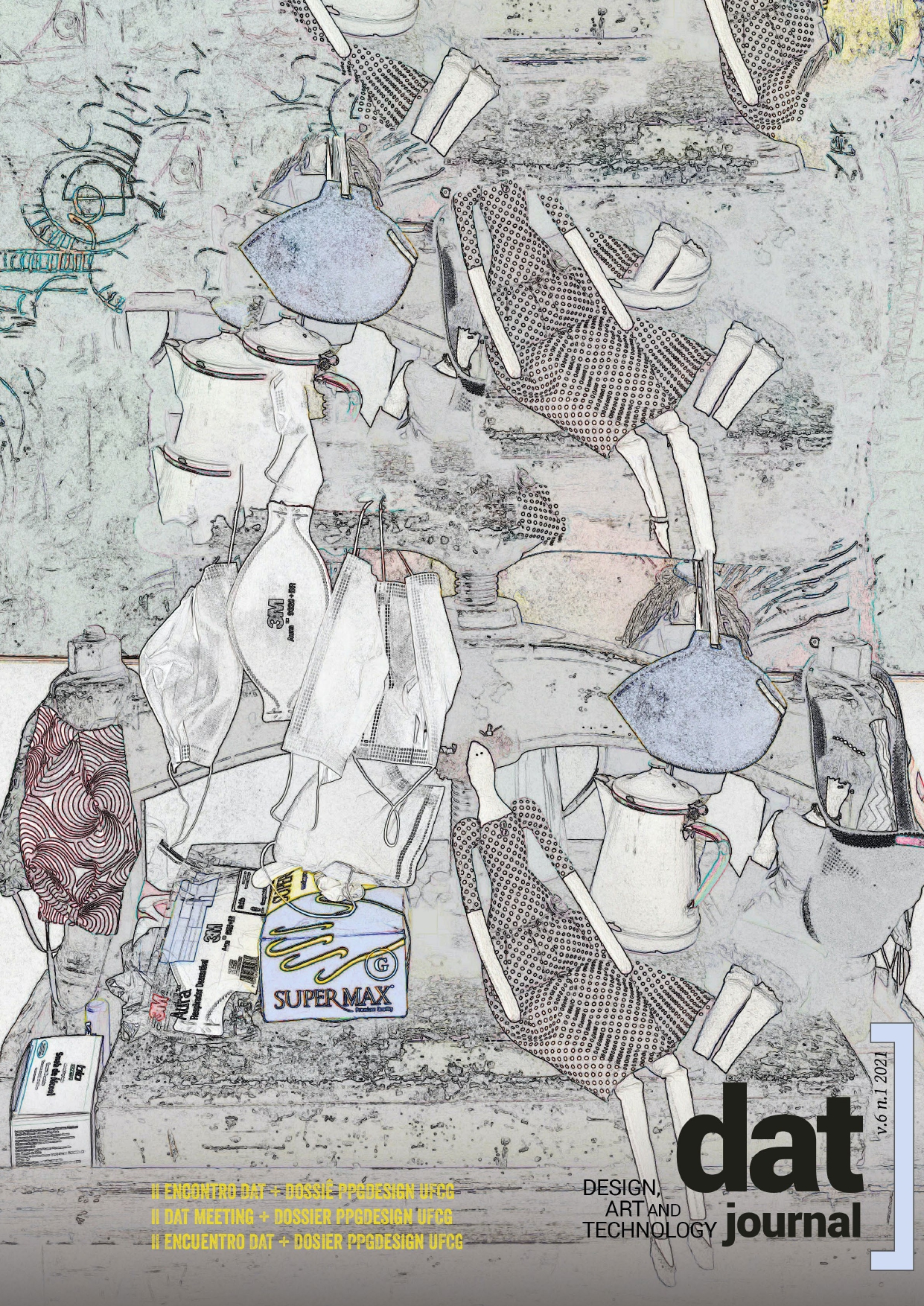Buen Vivir y perspectivas para el diseño sostenible
DOI:
https://doi.org/10.29147/dat.v6i1.332Palabras clave:
Sustentabilidad, Buen Vivir, Diseño Ecológico, Comunidades TradicionalesResumen
El artículo pretende establecer un diálogo entre el concepto de Buen Vivir y las propuestas de Diseño sostenible. Basado en una revisión bibliográfica, el artículo comienza presentando el concepto de Buen Vivir, originalmente Sumak Kawsay en quechua, desde la perspectiva del autor ecuatoriano Alberto Acosta. Buen Vivir observa lo que los pueblos andino y amazónico pueden enseñarnos sobre otra forma de vida: una forma de vida menos productiva, viendo la naturaleza y las comunidades como parte de un todo. Buen Vivir trae una alternativa a la propuesta de desarrollo occidental. A continuación, el artículo presenta una revisión de las propuestas del Diseño sostenible - con las propuestas de ecoeficiencia, uso de materiales renovables, creación de productos duraderos y la propuesta de compartir productos, trayendo también las ideas de innovación social y consumo suficiente. A partir de ahí, como resultado, establecimos convergencias entre Buen Vivir y Diseño Sostenible, creando una perspectiva latinoamericana para el tema.
Descargas
Citas
ACOSTA, A. O bem viver: uma oportunidade para imaginar outros mundos. Tradução de Tadeu Breda. São Paulo: Autonomia Literária, Elefante, 2016.
BLANCO, J. P. & AGUIAR, E. P. El Buen Vivir como Discurso Contraegemónico. Pos-desarrollo, indegenismo y naturaleza desde la visión andina. Mana vol.26 no.1 Rio de Janeiro 2020 Epub Apr 30, 2020.
HOLMGREN, D. Future Scenarios: How Communities Can Adapt to Peak Oil and Climate Change. Canada: Chelsea Green Publishing, 2009.
ILLICH, I. A convivencialidade. Lisboa: Publicações Europa-América, 1973.
KOTHARI, A. A flawed agenda for development. In: The Hindu Business Line, 26/09/2015.
LÉNA, P. Os limites do crescimento econômico e a busca pela sustentabilidade: uma introdução ao debate. In: Léna, P. e Nascimento, E.P. (orgs.), Enfrentando os limites do crescimento– sustentabilidade, decrescimento e prosperidade. R. Janeiro, Garamond, 2012. (p. 23-43)
MORAES, D. & KRUCKEN, L. (orgs) Caderno Avançado de Estudos em Design: Sustentabilidade II. Ed. UEMG, 2009.
MANZINI, E.. Design para Inovação Social e Sustentabilidade: Comunidades Criativas, Organizações Colaborativas e Novas Redes Projetuais. Rio de Janeiro: E-Papers, 2008.
MANZINI, E. Design, quando todos fazem design: uma introdução ao design para a inovação social. São Leopoldo, RS: Ed. Unisinos, 2017.
PEREZ, I. U.; MOURA, M.; MARTINS, S. B.; Inovação Social decrescimento: desenvolvendo alternativas, p. 231-242 . In: . Anais do Simpósio Brasileiro de Design Sustentável, São Paulo: Blucher, 2019.
THACKARA, J.. How to Thrive in the Next Economy: Designing Tomorrow’s World Today. London: Thames & Hudson, 2015.


























